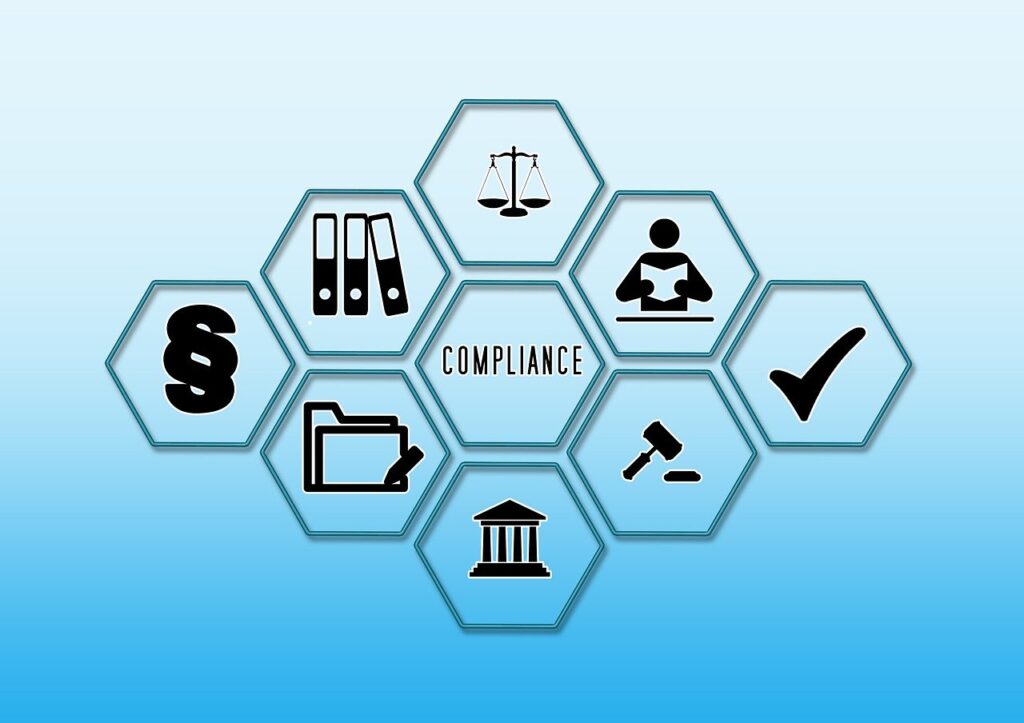Our Expertise
Governance, Risk, and Compliance (GRC)
- Integrated GRC Framework: Aligns strategy, compliance, and risk management.
- Proactive Risk Management: Anticipate and address potential challenges.
- Regulatory Compliance: Ensure adherence to evolving laws and standards.
- Enhanced Governance: Strengthen internal controls and accountability.
- Strategic Decision Support: Enable informed, risk-aware business choices.
- Operational Efficiency: Improve performance through structured oversight.
- Culture of Integrity: Foster transparency and ethical conduct across the organization.
- Customized GRC Solutions: Tools and insights tailored to your business environment.


- Safeguards Business Assets: Internal controls help protect physical, financial, and digital assets from theft, fraud, or misuse by putting checks and balances in place.
- Ensures Accuracy of Financial Records: They help maintain the accuracy and reliability of financial reporting, ensuring that all transactions are properly recorded and documented.
- Reduces Operational Risks: By implementing standard procedures and approval mechanisms, internal controls minimize errors and reduce the risk of process failure.
- Supports Regulatory Compliance: Internal controls are essential for meeting legal and regulatory requirements, helping organizations avoid fines, penalties, and reputational damage.
- Prevents and Detects Fraud: Regular monitoring and segregation of duties help detect unusual activities early and prevent fraudulent actions.
- Improves Efficiency and Accountability: Clearly defined roles and responsibilities lead to better task management, improved operational efficiency, and increased accountability.
- Facilitates Better Decision-Making: With reliable data and financial reports generated through strong controls, management can make informed and strategic decisions.
- Enables Audit Readiness: Well-documented control systems and procedures make it easier to conduct internal and external audits, reducing time and effort during reviews.
- Promotes Ethical Culture: A strong internal control environment fosters a culture of transparency, integrity, and ethical behavior across the organization.
- Enhances Stakeholder Confidence: Investors, partners, and regulators view robust internal controls as a sign of sound governance and long-term sustainability.
- Clear Governance Structure: Define roles, responsibilities, and reporting lines.
- Decision-Making Oversight: Establish accountability at all leadership levels.
- Strategic Alignment: Link governance practices with corporate objectives.
- Stakeholder Engagement: Promote trust through inclusive governance.
- Ethical Standards Integration: Embed integrity into organizational culture.
- Customized Frameworks: Tailor governance models to your unique operations.
- Regulatory Compliance: Align with legal requirements and industry best practices.
- Resilient Organizational Design: Enable transparency, sustainability, and growth.


- Regulatory Requirement Identification: Map relevant laws and standards to your operations.
- Compliance Integration: Embed controls and procedures into daily workflows.
- Risk Assessments & Monitoring: Detect and address compliance vulnerabilities early.
- Audit & Control Design: Ensure adherence through structured checks and balances.
- Violation Prevention: Minimize legal and reputational risks proactively.
- Training & Awareness Programs: Educate employees on compliance responsibilities.
- Tailored Compliance Frameworks: Align with business-specific needs and goals.
- Confident Regulatory Navigation: Operate securely in a fast-changing environment.
- Policy Creation & Review: Develop and maintain clear, compliant documentation.
- Regulatory Alignment: Ensure policies meet current laws and industry standards.
- Business-Specific Customization: Tailor procedures to fit unique operational needs.
- Structured Lifecycle Management: Support version control and approval workflows.
- Easy Access & Distribution: Ensure stakeholders can easily find and follow policies.
- Role Clarity & Process Consistency: Define responsibilities and standardize operations.
- Culture of Compliance: Promote adherence through well-communicated guidelines.
- Ongoing Audits & Updates: Keep documentation relevant amid evolving changes.


- Real-Time Risk & Compliance Visibility: Stay updated with live insights.
- Comprehensive Reporting Systems: Collect, analyze, and present actionable data.
- Gap Identification & Control Evaluation: Detect weaknesses in internal systems.
- Regulatory Change Tracking: Monitor evolving compliance requirements.
- Key Risk Indicator Monitoring: Proactively manage risks before they escalate.
- Automated Alerts & Dashboards: Ensure timely responses with real-time updates.
- Scheduled Reporting: Maintain consistent oversight and accountability.
- Informed Leadership Decisions: Enable strategic action with accurate data.
- Enhances Operational Efficiency: Digital tools automate repetitive tasks, streamline workflows, and reduce manual errors, resulting in faster and more efficient operations.
- Improves Customer Experience: Advanced technologies like AI, chatbots, and personalized platforms help businesses offer seamless, responsive, and customized services to customers.
- Enables Data-Driven Decision Making: Digital transformation provides real-time access to data and analytics, empowering organizations to make informed, strategic decisions.
- Supports Remote and Hybrid Work: Cloud-based solutions and collaborative tools allow teams to work efficiently from any location, ensuring business continuity and flexibility.
- Drives Innovation and Competitiveness: By adopting new technologies, businesses can create innovative products and services that set them apart in a competitive marketplace.
- Strengthens Cybersecurity: Modern IT frameworks include advanced security protocols, reducing vulnerabilities and protecting sensitive data from cyber threats.
- Reduces Costs Over Time: Although the initial investment may be high, automation and smart systems help reduce long-term operational and maintenance costs.
- Promotes Scalability and Agility: Digital platforms allow businesses to scale operations quickly and adapt to market changes with ease.
- Improves Internal Collaboration: Digital tools like ERP systems, CRM platforms, and team communication apps improve coordination across departments.
- Aligns Business with Modern Trends: Embracing digital transformation ensures the business stays relevant and in sync with the expectations of today’s tech-savvy consumers.

